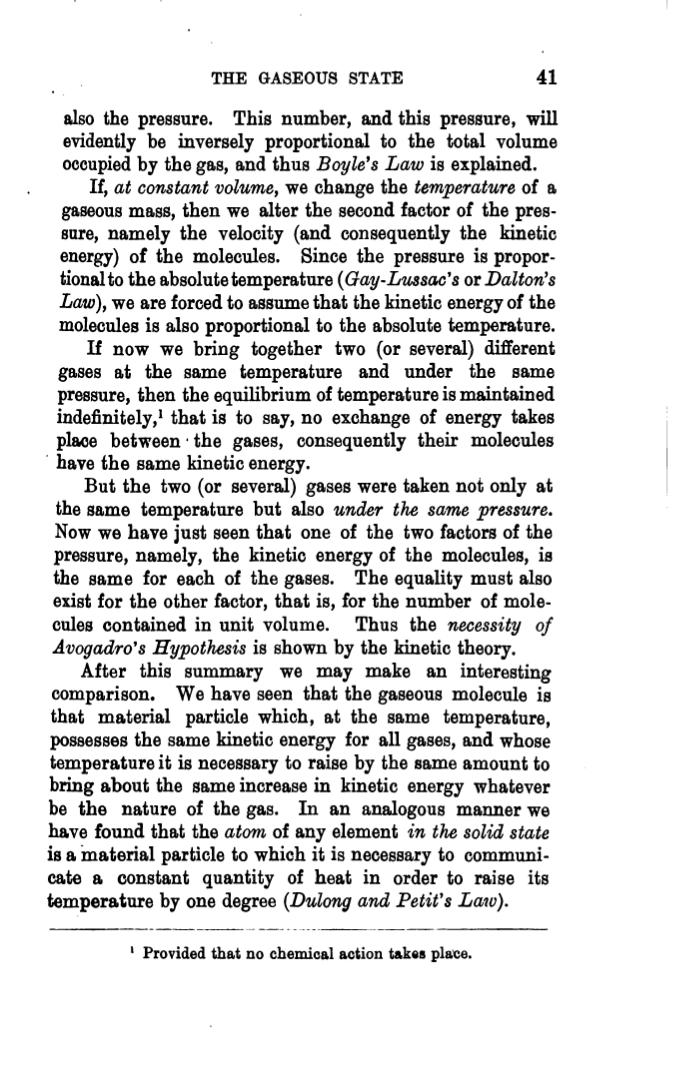also the pressure. This number, and this pressure, will evidently be inversely proportional to the total volume occupied by the gas, and thus Boyle's Law is explained.
If, at constant volume, we change the temperature of a gaseous mass, then we alter the second factor of the pres- sure, namely the velocity (and consequently the kinetic energy) of the molecules. Since the pressure is propor- tional to the absolute temperature (Gay-Lwsac's or Daltorts Law), we are forced to assume that the kinetic energy of the molecules is also proportional to the absolute temperature. If now we bring together two (or several) different gases at the same temperature and under the same pressure, then the equilibrium of temperature is maintained indefinitely, 1 that is to say, no exchange of energy takes place between * the gases, consequently their molecules have the same kinetic energy.
But the two (or several) gases were taken not only at the same temperature but also under the same pressure. Now we have just seen that one of the two factors of the pressure, namely, the kinetic energy of the molecules, is the same for each of the gases. The equality must also exist for the other factor, that is, for the number of mole- cules contained in unit volume. Thus the necessity of Avogadro's Hypothesis is shown by the kinetic theory.
After this summary we may make an interesting comparison. We have seen that the gaseous molecule is that material particle which, at the same temperature, possesses the same kinetic energy for all gases, and whose temperature it is necessary to raise by the same amount to bring about the same increase in kinetic energy whatever be the nature of the gas. In an analogous manner we have found that the atom of any element in the solid state is a material particle to which it is necessary to communi- cate a constant quantity of heat in order to raise its temperature by one degree (Dulong and Petit' s Law).
��Provided that no chemical action takes place.
�� �
